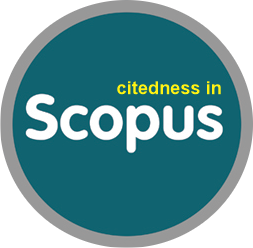Balanced Scorecard Sebagai Model Terintegrasi Yang Diterapkan Pada Sektor Publik Di Indonesia Studi Kasus: Kementerian Kelautan Dan Perikanan RI
DOI:
https://doi.org/10.32493/JJSDM.v4i3.10455Keywords:
Balance Scorecard, Sektor Publik, New Public ManagementAbstract
Istilah 'pemerintah' tidak merujuk pada satu organisasi, pemerintah di tingkat mana pun biasanya merupakan kumpulan organisasi yang kompleks, memiliki hubungan yang kompleks dengan organisasi lain di dalam negara dan dengan pihak luar. Untuk dapat menjalankan fungsinya pemerintah harus memiliki tata kelola yang baik. Penerapan NPM dapat mendorong perbaikan pengelolaan sektor publik. Reformasi NPM sedang terjadi di semua negara-negara terlepas dari berbagai tahap perkembangan ekonomi dan politik mereka. Implementasi NPM di organisasi sektor publik pada dasarnya adalah untuk memperkenalkan konsep kinerja. Salah satu wujud implementasi pengukuran kinerja yang tercermin dalam penerapan NPM adalah aplikasi Balance Scorecard (BSC) di sektor publik. Tujuan dari makalah ini adalah untuk mengajukan perbaikan dan mengevaluasi model pengukuran kinerja menggunakan Balanced Scorecard (BSC) dengan menggunakan Four Process Managing Strategy yang dikemukakan oleh Kaplan & Norton (1996) yang diterapkan di Kementerian Kelautan dan Perikanan RI.
References
Affandi, A., Sarwani, A. S., Erlangga, H., Siagian, A. O., Purwanto, A., Effendy, A. A., ... & Wahyitno, C. D. M. (2020). Optimization of MSMEs Empowerment in Facing Competition in the Global Market during the COVID-19 Pandemic Time. Systematic Reviews in Pharmacy, 11(11), 1506-1515.
Alford, J., (2000). The Implications of “Publicness†for Strategic Management Theoryâ€. Exploring Public Sector Strategy. Financial Times Prentice Hall, Harlow, pp. 1-16.
Aslan. I, Çınar. O & Özen. Ü (2014). Developing Strategies for the Future of Healthcare in Turkey by Benchmarking and SWOT Analysis. 10th International Strategic Management Conference. Procedia - Social and Behavioral Sciences 150 (2014) 230 – 240.
Boland, T., Fowler, A., (2000). A systems perspective of performance management in public sector organizations. The International Journal of Public Sector Management 13 (5), 417-446.
Borins, Standford. (1998). Lessons from the New Public Management in Commonwealth Nations. International Public Management Journal, l (1): 37-58.
Doran. Martha S., Haddad. K & Chow. C. W. (2002) Maximizing the Success of Balanced Scorecard Implementation in the Hospitality Industry. International Journal of Hospitality & Tourism Administration, 3:3, 33-58
Dreveton. Benjamin (2013). The advantages of the balanced scorecard in the public sector: beyond performance measurement. Public Money & Management, 33:2, 131-136.
Eastwood, Christy; Turner, Susan; Goodman, Melissa; and Ricketts, Kristina G. (2016) Using a SWOT Analysis: Taking a Look at Your Organization. Community and Econonomics Development Publication.
Eisenhardt, K.M. (1989), ‘Building Theories from Case Study Research’, Academy of Management Review, Vol. 14, No. 4, pp. 532–50.
Farneti. Federica (2009) Balanced scorecard implementation in an Italian local government organization, Public Money & Management, 29:5, 313-320.
Frada Burstein, Clyde W. Holsapple, C.W. (2008) Handbook on Decision Support Systems 1: Basic Themes, Springer Science & Business Media, 22, Computers, 854pages.
Haque. H.M. E,Dhakal. S & Mostafa. S.M.G (2020). An assessment of opportunities and challenges for cross-border electricity trade for Bangladesh using SWOT-AHP approach. Energy Policy 137 (2020) 111118.
Harun Harun, Monir Mir, David Carter & Yi An (2019). Examining the unintended outcomes of NPM reforms in Indonesia. Public Money & Management. Routledge, Taylor & Francis Group.
Hood, C. (1991), “A public management for all seasons?â€, Public Administration, Vol. 69 No. 1, pp. 3-19
IAI (2017) : Standar Akuntansi Keuangan, edisi 2017, Jakarta.
Jones, R and Pendlebury. M. (2010). Public sector accounting. 6th ed., Pearson Education, London.
Kaplan, R.S., Norton, D.P., (1992). The balanced scorecard: measures that drive performance. Harvard Business Review 70 (1), 71-80.
Kaplan, R.S., Norton, D.P., (1993). Putting the balanced scorecard to work. Harvard Business Review 71 (5), 134-142.
Kaplan, R.S., Norton, D.P., (1996). Using the balanced scorecard as a strategic management system. Harvard Business Review 74 (1), 75-85.
Kaplan, R.S., Norton, D.P., (2000a). The Strategy-focused Organisation: How Balanced Scorecard Companies Thrive in the New Business Environment. Harvard Business School Press, Cambridge, MA.
Kaplan, R.S., Norton, D.P., (2000b). Having trouble with your strategy? Then map it. Harvard Business Review 78 (5), 168-176.
Kaplan, R.S., Norton, D.P., (2004). The strategy map: guide to aligning intangible assets. Strategy and Leadership 32 (5), 10-17.
Kementerian Kelautan dan Perikanan Republik Indonesia (2017). Peraturan Menteri Kelautan Dan Perikanan Republik Indonesia Nomor 63/Permen-Kp/2017. Rencana Strategis Kementerian Kelautan dan Perikanan tahun 2015-2019.
Kementerian Kelautan dan Perikanan Republik Indonesia (2018). Laporan Kinerja 2018.
Lane, Jan-Erik (2000). The Public Sector: Concepts, Models and Approaches. SAGE Publications, 2000. ProQuest Ebook Central.
Newcomer, Kathryn E. (2007) Measuring Government Performance. International Journal of Public Administration, 30:3, 307-329
Pallot, June. (1992). Element of a theoretical framework for public sector accounting. Accounting, Auditing & Accountability Journal. Vol.5 Issue: 1.
Ramos, T.B., Alves, I., Subtil, R., Joanaz de Melo, J., (2007). Environmental performance policy indicators for the public sector: the case of the defence sector. Journal of Environmental Management 82, 410-432.
Sarker, Abu Elias (2006). New public management in developing countries. An analysis of success and failure with particular reference to Singapore and Bangladesh. International Journal of Public Sector Management. Vol. 19 No. 2, 2006. pp. 180-203.
Senarath. S.A.C.L. & Patabendige. S.S.J. (2015). Balance Scorecard: Translating Corporate Plan into Action. A Case Study on University of Kelaniya, Sri Lanka. Global Conference on Business & Social Science-2014, GCBSS-2014, 15th&16th December, Kuala Lumpur. Procedia - Social and Behavioral Sciences 172 (2015) 278 – 285
Steccolini. Ileana. (2018). Accounting and the post-new public management: reconsidering publicness in accounting research. Accounting, Auditing & Accountability Journal.
Van de Walle, Steven & Bouckaert, Geert (2007) Perceptions of Productivity and Performance in Europe and The United States. International Journal of Public Administration, 30:11, 1123-1140
Van der Stede. W. A, Young. S.M & Chen. C. X (2005). Assesing the quality of evidence in empirical management accounting research : The case of survey studies. Accounting, Organization and Society 30. Elsevier. Pp 655-684.
Downloads
Published
How to Cite
Issue
Section
License
Copyright (c) 2021 Lita Dharmayuni, Benny Khairuddin

This work is licensed under a Creative Commons Attribution 4.0 International License.
Authors who publish in this journal agree to the following terms:
The author owns the copyright of the article and assigns to the journal the right of first publication with the work simultaneously licensed under the terms Atribusi 4.0 Internasional (CC BY 4.0)
 which allows others to share the work with acknowledgment of the work's authorship and initial publication in this journal.
which allows others to share the work with acknowledgment of the work's authorship and initial publication in this journal.Authors may enter into separate additional contractual arrangements for the non-exclusive distribution of the published journal version of the work (for example, posting it to an institutional repository or publishing it in a book), with acknowledgment of the work's original publication in this journal.
Authors are permitted and encouraged to post their work online (for example, in institutional repositories or on their websites) before and during the submission process, as this can lead to productive exchanges, as well as earlier and larger citations of published work (See The Effect of Open Access).






.png)

